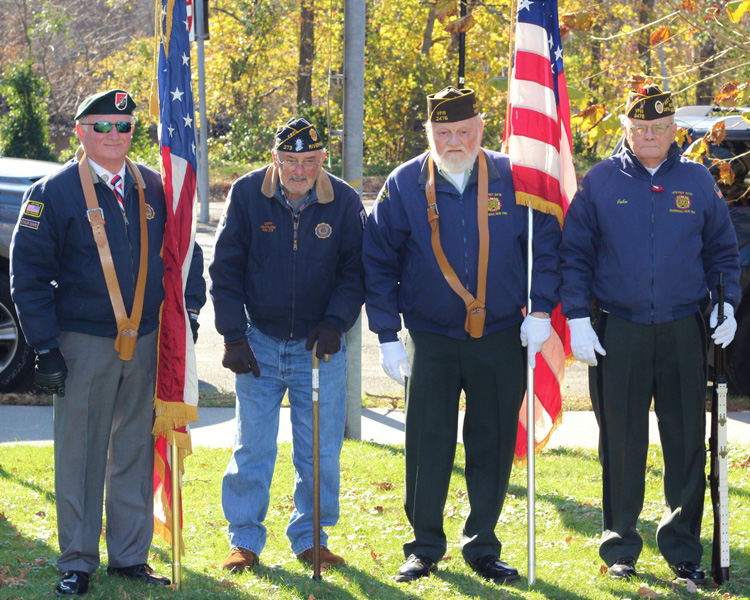More than 6 million veterans now eligible to join American Legion


Jim Best of Greenport served in New York’s Air National Guard in 1983 and ’84, then served on active duty in the Air Force until 1987.
About 22 years ago, he tried to join the American Legion. But rather than become a member, he had to settle for volunteering.
“In the last 10 years, I’ve been mostly running the Sons of the American Legion,” he said. “And just recently I was able to become a Legion member.”
Mr. Best and more than six million other honorably discharged veterans can now join the American Legion, a federal organization, thanks to legislation signed into law July 30.
Before its passage, veterans who served during eras considered peacetime were not eligible to become members of the American Legion. Many veterans instead served as volunteers or joined the Sons of the American Legion. The law allows veterans who served during unrecognized times of war after World War II to access full membership. The American Legion has posts in Mattituck, Southold and Greenport.
Charles Sanders, commander of Southold American Legion Post 803, served in the Marine Corps from 1991-96, after which there was a break in service. He entered into the National Guard as an officer, serving in Afghanistan in 2010 and again in 2012, and in Guantanamo Bay, Cuba in 2015.
“There are four pillars of the American Legion,” he said. “There’s Americanism, children and youth, national security and veterans affairs and rehabilitation. Those are the pillars that kind of surround what a Legionnaire is and those are the things that we want to promote.”
The American Legion was established after World War I as the only veterans organization that could handle the large influx of wounded and struggling service members, Mr. Sanders said. However, countless individuals who served on active duty from 1942 to the present day, whether through direct or indirect participation, were excluded. Now, their service is being honored.
“It was also a time where millions served,” Mr. Sanders said of the various eras formerly considered “peacetime” and not recognized by the Legion. “They weren’t in active combat, but there were over 1,600 individuals who lost their lives in times of service during that time period that do no count as Legionnaires.”
Mr. Best described the long waiting period as “demeaning.”
“I served in the Middle East just before the Iraq War and let me tell you something, it wasn’t wonderful over there then, either, before the war,” he said. “Being in the security command and control division, you worried that it wasn’t safe where you were at, but we didn’t get any recognition being in the Middle East pre-war.”
He became a Sons of the American Legion member, but said it wasn’t the same.
“Knowing that you had served and nobody else around you had served, it was kind of hard for them to understand what you went through. When you don’t serve, it’s just totally different to understand.”
Mr. Best first sought out membership in the Legion because his brother had been accepted as a member and because he wanted to stay involved. When he heard the bill had been signed into law, he immediately applied for membership.
His sons have also served the country, he said, and what matters most to him is walking into a place where you can “actually be wearing your active duty symbols and your ribbons and your rewards from when you were actually serving active duty.” He said being a Legion member also bears more respect from other servicemen and -women.
Tom LaMothe of Greenport, 61, joined the Air Force at 17, serving active duty from 1975 to 1980 — during the Cold War era. He was an aircraft security guard.
“My situation with the Legion, it was kind of funny; it was a technicality. When I went down to sign up first, it was in the fall of 1974,” he said. “I had just turned 17 and I filled out all the paperwork, took the test, did everything, got my mother’s permission and the recruiter said basically that because of a training backlog and so many guys who were in the pipeline that they couldn’t take me for another good six months.”
He signed up anyway under the Delayed Enlistment Program, allowing him to get his pay raises early, but despite having sworn the oath in early 1975, he missed the cutoff date by a hair.
“Vietnam was still technically an open theater,” he said. “So, while I was waiting to go on active duty — I didn’t actually ship out until August — the Vietnam War ended. I think the official date was May 5, ’75. That was a cutoff date the old Legion charter used.”
He got a GI Bill from the Vietnam era that he was able to use for the purpose of joining the VA, but the Legion didn’t see him as eligible.
At the time, he said, he could not have cared less.
“Years later, a lot of veterans would join the Legion and it kind of rankled me because I had volunteered during the time period and even swore the oath and everything. It was not my fault, so to speak, that I missed it by three months.”
He didn’t join for the benefits alone. He said he wanted in on the parades Southold holds each year — another testament to the camaraderie Legionnaires share.
“As time [goes] on, you get older, you reflect on your life,” Mr. LaMothe said. “I did realize as I got older, and more so even now that I’m in my 60s, that being in the military, especially at a young age, it was very formative and very transformative and just a huge part of my life and I still think of it a lot to this day.”





